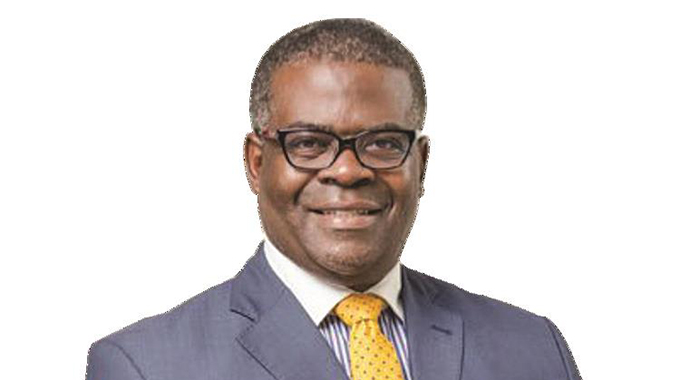Renewable energy market open to IPPs

Africa Moyo Deputy News Editor
Zimbabwe is facing acute electricity shortages arising from low water levels in Kariba Dam and lack of regular refurbishment of thermal power plants. Apart from expanding Hwange Thermal Station, which should feed 600MW into the grid on completion from next year, Government is promoting power generation from renewable energy sources, especially solar. Our Deputy News Editor AFRICA MOYO (AM) engaged Energy and Power Development Minister FORTUNE CHASI (FC) last week to check on progress in the adoption of renewable energy. For more, read the following excerpts . . .
*****
AM: A number of corporations such as Schweppes, Old Mutual and the Standards Association of Zimbabwe (SAZ) have invested in solar systems to reduce over-reliance on the struggling ZESA. Tell us the extent of interest since last year.
FC: The renewable energy market in Zimbabwe is open to Independent Power Producers (IPPs) who are comprised of locally or foreign based companies. The total number of companies which applied for solar power plant registration and solar power generation licensing at ZERA goes up to 48 to date, inclusive of 17 companies which were licensed in the year 2019. Among the registered and licensed companies, there are 9 large corporations to date, some of which were exempted from seeking licensing such as SAZ (0,18MW). Five large corporations have been registered with ZERA for solar power generation in the years 2019 and 2020, and these include Kefalos Cheese Products (Pvt) Ltd, SAZ, Schweppes (Pvt) Ltd, Caledonia Mining Services and Sable Solar Energy. The current trend is that of companies installing solar rooftops or ground mounted which is mainly for own consumption. This helps reduce pressure on the grid including in the long term reduction of imports.
AM: Since the start of the year, how many companies have applied for solar projects in 2020?
FC: The records at the Zimbabwe Energy Regulatory Authority (ZERA) indicate that four companies have been issued with licenses in the year. However, this figure is not reflective of the number of applications that have been submitted this year. Processing of a licensing application from the time of submission takes 90 days from the date of submission provided all the requirements are attached, and the duration of a license is dependent on the lifespan of equipment used in power generation or transmission; and for generation licenses the duration is up to 30 years. Therefore, this figure is indicative of companies which had submitted their applications for licensing in the fourth quarter of the year 2019.
AM: What is your general comment on the number of companies going green and what form of support are they getting from Government?
FC: The number of companies that are going green through the uptake of Renewable Energy (RE) technologies such as solar power, biogas and hydropower are on a definite but gradual increase; with limitations rooted in influencing factors such as establishment of reliable funding mechanisms to finance RE projects and formation of sustainable partnerships between financiers and the companies are difficult.
The Ministry of Energy and Power Development has been supporting companies and investors interested in power generation through green technologies through the formulation of policies, amendment of existing statutes and subsequent enforcement of these policies and regulations through its regulatory body, ZERA. This approach creates an enabling environment for the financing of RE projects, as well as provide for the procurement of solar components duty free, thus incentivising investment in the RE sector.
The policies also serve to institute innovative funding mechanisms to tap into financing opportunities such as Clean Development Mechanisms, feed-in tariffs and micro-credit institutions for Renewable Energy Technologies (RETs); and this promotes investment in solar energy systems to cater for companies and communities.
Existing policies and statutes that are being used include:
The National Energy Policy (NEP) of 2016 — The policy provides information on existing RE resources in Zimbabwe, to raise awareness and attain objectives of increasing usage and investment in RE, diversify energy supply options and increase access to modern energy in rural areas.
The National Renewable Energy Policy (NREP) 2019 — The policy document has already been passed in Cabinet, and it is going to be officially launched on the 19th of March 2020. This policy was formulated to address barriers that have been hindering the progression and growth of the RE sector, which encompasses the solar industry.
Electricity (Solar Water Heating (SWH)) Regulations of 2016 — The regulations were meant to regulate installation, licensing and operation of SWH systems to save electricity.
Energy Regulatory Authority Act [Chapter 13:23].
SI 147 of 2010 on solar panels.
SI 235 of 2019.
SI 86 of 2018 on net metering.
AM: What are the licensing requirements like, and the licensing process for large corporations?
FC: Licensing for solar power production is mandatory starting from a generation capacity of 100 kW upwards. The process is similar for all IPPs generating a minimum of this capacity, irrespective of the company being a corporation or not. In the licensing process, application forms are accessed from the ZERA (website www.zera.co.zw ), filled-in and submitted in triplicate at ZERA offices accompanied by other required documents physically, through mail, or online ([email protected].
The licenses for electricity are categorised under three categories namely Generation, Transmission and bulk supply and Distribution and Retail licenses. Large corporations mostly apply for Generation licensing which allows them to produce power for their own use. If they choose to sell the excess power they generate to other consumers, a Power Purchase Agreement (PPA) would then be required for processing of the application.
License fees for greenfield projects (new projects) are categorised into two groups, 1MW to 10MW and 11MW and above. A non-refundable application fee is charged upon submission of the application documents, and a subsequent cost reflective licensing fee is charged based on costs that will be imposed on ZERA through regulation. Therefore, smaller operations impose lower administration costs as opposed to large operations, thus the fees paid are reflective of the size of the power plant. The procedure for license fees determination is indicated in SI 55 of 2015.
The general requirements for license application are as follows:
(a) ZERA Application Form
(b) Business Plan
(c) Certificate of Incorporation/Articles of Association
(d) Company registration documents — CR2, CR14
(e) Particulars of shareholders and directors of the company
(f) Board profile and shareholding structure or shareholders agreement
(g) Proof of financial capability (equity, debt financing or loan or grant etc
(h) Audited financial statements for the past three years (where applicable)
(i) Tax clearance certificate
(j) Technical capacity to carry out the project.
Further, there are Generation license requirements which are as follows:
- a) Generation Capacity
- b) Buyer/off-taker arrangements
- c) Electricity generation cost, tariff and tariff assumptions (plant load factor)
- d) Grid impact assessment done by ZETDC
- e) Fuel supply arrangement(s) or agreement(s)
- f) Proposed power purchase agreement
- g) Proposed interconnection point to the transmission system
- h) Results of the technical pre-feasibility study
- i) Maps indicating the location of the generating plant
- j) Land use permit
- k) Water extraction permit (where applicable)
- l) Environmental impact assessment prospectus or certificate
- m) Project timeline or Gantt chart or implementation plan
The issuance of the license is conditional, subject to confirmation of fulfilment of specific conditions that may be outstanding at the time of the submission.
AM: How many IPPs do we have in Zimbabwe and can you comment on the amount of time that IPPs take before implementing their projects?
FC: There are now 112 IPPs in Zimbabwe based on the number registered with ZERA through the process of licensed application; and the figure is continuously increasing. However, only a small number have managed to effectively implement their projects to the point of commissioning and generating power that is fed into the national transmission grid. Actually, there are 14 licenced IPPs who are currently operating and feeding power to the grid in Zimbabwe.
AM: What is the significance of IPPs to the national grid in the face of generation and supply constraints faced by ZESA?
FC: IPPs are contributing approximately 5 percent in terms of energy generated to the national grid, and this figure is not too significant as a contribution to reduce the national energy demand from the grid. In terms of megawatts, about 100MW is generated from renewable sources at sugar cane estates in the lowveld, at mini-hydropower plants in the eastern highlands and a few small solar plants.
Major constraints which have been limiting operations of IPPs include currency changes, lack of access to foreign currency, land procurement for projects, absence of a viable tariff, lack of funding and policy uncertainty. However, the Ministry, through the launch of the National Renewable Energy Policy (NREP) is confident that the latter will be addressed, and there will be clarity in terms of policy guiding the development and implementation of renewable energy projects.









Comments